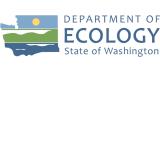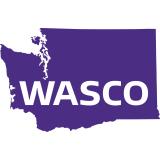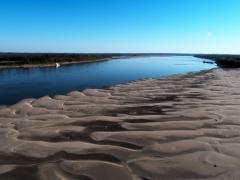Case Study: An Early Drought Declaration Gave Washington Communities Opportunity To Prepare
Before summer took hold, Washington issued a nearly-statewide drought declaration, allowing funding to become available for drought relief.
A drought declaration earlier this spring opened up funding to eligible public entities in Washington to respond to more intense drought conditions before they arrived this summer.
Despite the Pacific Northwest’s rainy reputation, much of Washington falls within a rain shadow east of the Cascade Range, where average annual rainfall amounts average fewer than 15 inches. With too little snowpack, above-average temperatures, or missing spring rains, drought can set in, having enormous impacts on water supply, agriculture, energy, public health, and more. This year, these three conditions came together across the state.
Washington defines drought as periods when an area’s water supply is currently below or forecast to fall below 75% of normal and water users and the environment are anticipated to experience undue hardship as a result of these drought conditions.
In April, the state’s water supply fell below 75% of normal, and two governmental committees of state and federal partners convened as part of the state’s drought declaration process.
As a result, before drought conditions deteriorated and drought impacts worsened, the state issued a Drought Emergency Declaration. Issuing a Drought Emergency Declaration in April, rather than during the predicted warm and dry summer, allowed water users to prepare for water supply impacts ahead of time, and provided more direct information about the status of the state's water supplies to the public.
This early drought declaration is an example of one mechanism states can use to help communities prepare for drought impacts, such as reduced irrigation and drinking water supplies, decreased water quality, and negative impacts to aquatic ecosystems.
More effective drought early warning can help communities move from a reactive to a proactive approach to mitigate the impacts of drought. After virtually the entire Pacific Northwest reached historic drought conditions in 2015, NIDIS established the Pacific Northwest Drought Early Warning System (DEWS), a collaborative network of federal, tribal, state, and local partners that share information and coordinate actions to improve early warning capacity and resilience to drought. NIDIS, working with local partners, continues to support drought early warning in the region, including co-developing the annual Pacific Northwest Water Year Impacts Assessment.
Now, as 26.7% of Washington is in Moderate to Severe Drought (D1-D2) and 75.2% of the state is in Abnormally Dry (D0) or worse as of July 2, 2024, according to the U.S. Drought Monitor, the state's early drought declaration offered Washington communities funding support to mitigate the impacts of drought conditions. The Washington Department of Ecology continues to be concerned for expanded drought impacts this summer, said Caroline Mellor, statewide drought lead for the agency. For instance, the Northwest River Forecast Center forecasts below 75% of normal streamflow for rivers in all regions of the state, and multiple rivers in Northwest Washington are expected to see record and near-record lows, with this year predicted to be among the five driest years in the 75 year historic record for several river basins.
“This declaration is about providing relief options to tribes and local public entities facing hardship from current drought conditions,” Mellor said.
The declaration allowed the Department of Ecology to provide emergency drought relief, including access to $4.5 million in drought relief funding for federally recognized tribes, cities, counties, irrigation districts, water and sewer districts, and other public entities. In the past, this funding supported removal of recreational dams impeding flows, trucking drinking water to communities, transferring water from water banks for irrigation districts, and mitigating dry water wells. In addition to financial support, the declaration enabled expedited processes for emergency drought permits and temporary water rights transfers. This process does not grant the state emergency powers and is independent from decision-making processes for the curtailment of water, but offers those impacted options to seek relief.
The state also recently launched the Drought Preparedness and Planning pilot grant program. This past spring, the Department of Ecology made $1,800,000 in funds available in a competitive grant process for the development of local drought preparedness plans to encourage long-term planning for water supply security, resiliency, and preparedness.
As Washington experiences drought—and emergency drought declarations—with increasing frequency, tools like the Drought Preparedness and Planning pilot grant program incentivize drought readiness to address anticipated future drought.
“Drought may not move as quickly as other damaging weather and climate events, but like other disasters, preparation can reduce the harm it causes,” said Jason Gerlich, Pacific Northwest Regional Drought Information Coordinator at NOAA’s National Integrated Drought Information System (NIDIS). “In the context of the Pacific Northwest DEWS, this is one example of the many ways states can proactively incentivize drought readiness and support communities by taking early action to prepare for it.”






